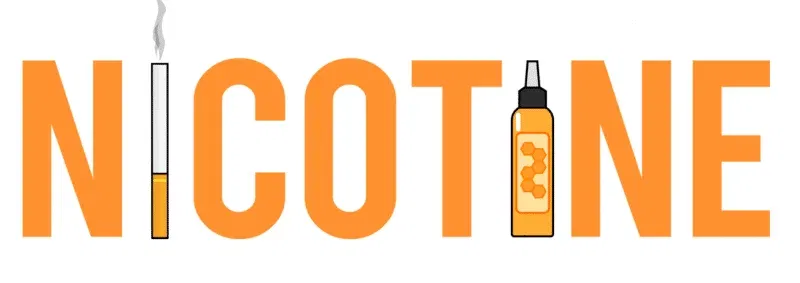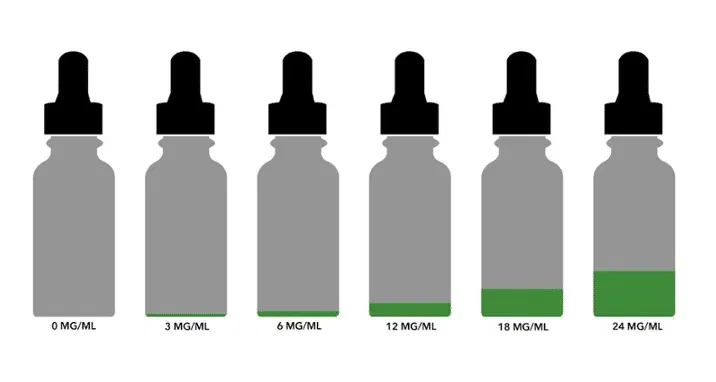Difference in Nicotine Delivery Between Cigarettes and Vaping
There’s no way around it – cigarettes are a lot more efficient when it comes to delivering nicotine into your bloodstream. It’s not really surprising – concentration per puff is higher, and smokers take more frequent puffs (there’s no point in wasting a cigarette, right?).

According to a study published in Nature, it takes about 35 minutes of proactive vaping to get the same amount of nicotine into the blood as after 5 minutes of smoking a cigarette (provided that the amount of nicotine in both is equivalent). This study deals with high-end vaping products and new generation mods and tanks such as Smok Alien and Limitless tank.
On the other hand, if you’re using a simple vape pen (such as our Kind V2 pen, for example) it can take a bit more to get the same results. This doesn’t mean that you should dismiss it entirely – we wholeheartedly recommend V2 to vapers who are trying to cut down on their nicotine consumption, as well as to those who don’t have extreme nicotine cravings in the first place.
To get the same amount of nicotine into your bloodstream as with a cigarette, you would have to vape on a vape juice that has around 50 mg of nicotine. At this moment, you can get to that level only using nic salts, which are bit more expensive than regular vape juice. High nic regular juice is not available because of several reasons, but primarily because it would be too harsh on the throat.
How to Choose the Nicotine Level That’s Right for You (Regular Vape Juices)

Most new vapers have no idea how vape juice nicotine level affects their likelihood to fully switch to vaping. Without knowing that nicotine delivery is lower with vaping than it is with smoking, it’s no wonder most people start off too low and ultimately, end up smoking again.
A lot of people start with 12 or 18 milligrams, which is ok if you’re a light smoker. If you’re a heavy smoker it’s advisable that you start with 24 mg and work your way down. Remember, the point is to find a way to stick to vaping – reducing nicotine level is something you should worry about later on.
24 mg/ml vape juice – even though this high nicotine level is usually recommended to heavy smokers (2 packs a day) you should consider starting with it if you smoke even one pack. True, it’s a harsher vape but this study from 2014 found that new vapers that start with over 20 mg/ml vape juices have a higher success rate when it comes to smoking cessation and switching.
18 mg/ml vape juice – most people start with 18 mg and that’s just fine. Usually, the nicotine dosage is high enough to satisfy a craving but low enough not to significantly alter the taste of the vape juice (quite important as well). If 18 mg isn’t really working for you, a switch to 24 mg will usually do the trick.
12 mg/ml vape juice – if you’re a light or social smoker then this is the nicotine level you’re looking for. It’s just enough to satisfy your cravings without impacting the flavor. Most vapers change to 12 mg relatively quickly after switching in an effort to reduce nicotine consumption.
9 mg/ml vape juice – this is another step down toward being completely nicotine-free. Most smokers won’t be able to satisfy their nicotine cravings with 9 mg however, so you should only start with this if you’re a very light smoker.
3 mg/mg vape juice – the last step before ditching nicotine completely. Smokers won’t find any satisfaction (nicotine-wise) vaping these vape juices. This is exclusively for established vapers who have cut down drastically or are looking to completely get rid of nicotine.
0 mg/ml vape juice – vapers who have been vaping for a significant amount of time find pleasure in flavor and huge plumes of vapor, not necessarily in nicotine. They no longer need nicotine but they enjoy vaping and draw pleasure from it.
ALSO READ:
5 SURPRISING BENEFITS OF NICOTINE
IS VAPING JUISE CONTAIN NICOTINE ?
LOOKING FOR
- Buy Pure Nicotine Liquid
- Buy 99.9% pure liquid nicotine
- Inquiry now
- Buy Nicotine USP/EP for industrial use.




Comments
Post a Comment